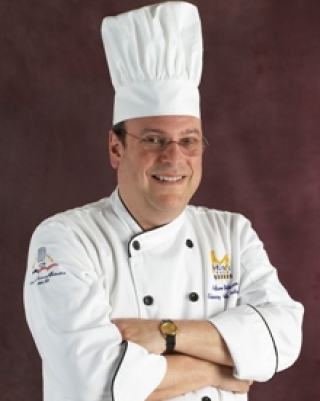
50 Minute Classroom: Tragedy of the Commons
02 November 2015We need to start teaching culinary students from the beginning of their education to care for, respect and even nurture the kitchen equipment.
By Chef Adam Weiner, CFSE
Before I get to this month’s article, I want to wish you the best of success in teaching your classes how to prepare for Thanksgiving. Last year I published an article HOW TO PREPARE THANKSGIVING SIDE DISHES IN 50 MINUTES. The article was very popular with nearly 9,000 hits. If you haven’t looked at it, you might want to give it a glance. It should really help you with your lesson plans over the next several weeks.
Now, on to this month’s topic: Nurturing kitchen equipment.
Chefs and food establishment owners around the country have problems with their cooks trashing equipment in all types of commercial kitchens. For example, Teflon pans have been around since 1956—even longer than I’ve been around—yet cooks will use metal tongs and steel wool to reduce a $90 sauté pan into a piece of scratched junk in one shift.
This phenomenon is certainly not limited to high school students or even culinary professionals. The problem is many people take the attitude that if they don’t own something they don’t have to take care of it or protect it for others to use.
In 1833 William Forster Lloyd, a British economist, penned the phrase “the tragedy of the commons.” He wrote about the problems of having common areas for farmers to bring their cattle, sheep and goats to graze. It literally became a free-for-all with no regard for preserving the common grazing area for use by other farmers. In 1968 Garrett Hardin, an American ecologist, modernized it. He recognized that if a group of people share something without owning it, there is no incentive to take good care of it. The incentive, he wrote, was to use it up and the heck with the consequences for others.
And now I am using the phrase “the tragedy of the commons” to describe what happens every day in your classroom kitchens.
You know the problems: slamming oven doors, which results in broken hinges; problems with Teflon as mentioned above; pans and pots burnt or dropped or both; and safety devices bypassed. The question becomes: How to discourage students from doing this?
First, I have a confession: I have NEVER found a successful way to protect Teflon, Silverstone and other coated pans. Even if I stand one-on-one with the student I can’t win. If I turn my back for a second to answer a question from another student the pan-user grabs metal tongs and scrapes away. I have completely abandoned the concept in any of the kitchens where I teach of ever using coated pans. And yes, that makes it really tough to teach sunny-side-up eggs and omelets.
However, I have found a few ways to handle many of the non-Teflon problems.
- Play the game “The Price is Right” Have students look up the item’s price. If you use commercial grade, make sure they look up the correct price and don’t forget to add shipping. Then do a little culinary math. Write down the price of the item on the board. Then inform the students that if they get paid $10/hour as a starting salary they will bring home about $8 after taxes. Divide $8 into the cost of the item showing them how many hours needed to work if they had to replace their damage. OUCH!
- Have them design a kitchen In a few months I will publish an article on how to have students design a restaurant. But, for the moment they can just design a kitchen. Have them lay out on paper or on computer (there are many internet resources to help) a commercial kitchen including appliances and equipment. Give them something specific such as a taqueria or a burger joint if you want similar projects. If you want variety, ask them to create anything. Remind them to include the hood and installation. When I do this with my students, inevitably I hear, “Oh my gosh, I can’t believe that mixer costs $1,000,” or “Chef, did you know that deck convection ovens cost over $6,000?”, or “I can’t believe that pan is over $100.”
- You use it, you abuse it, you fix it If someone burns a pan, pot or baking sheet then that same student has to scrub it clean - not the assigned group dishwasher or worse yet, the instructor. Be careful to monitor this. It has to be the actual person who burned the pan to clean it and not someone begged or bullied into doing it.
- Peer pressure If someone abuses the equipment, that equipment is off limits to EVERYONE for the rest of the day. If someone waves a knife then all knives get put away for everyone. If someone slams their oven door then ovens for every station are off limits. Nasty, I know. The food might not get finished but the equipment will be in better shape the next day.
- Role reversal Take the students who are the biggest equipment abusers and make them “kitchen cops” for a day or two. When they go back to their regular role hopefully they will have learned something. If they haven’t, don’t worry, because the new “kitchen cops” will be focusing their attention on the ones who ratted them out.
Will this work 100% of the time? Absolutely not. But, it’s a start to solving a problem that has been studied and pondered for nearly 200 years.
Chef Adam Weiner, CFSE, teaches a 20-week Introduction to Cooking program for JobTrain on the San Francisco Peninsula, and is a frequent presenter at CAFÉ events throughout the nation.
